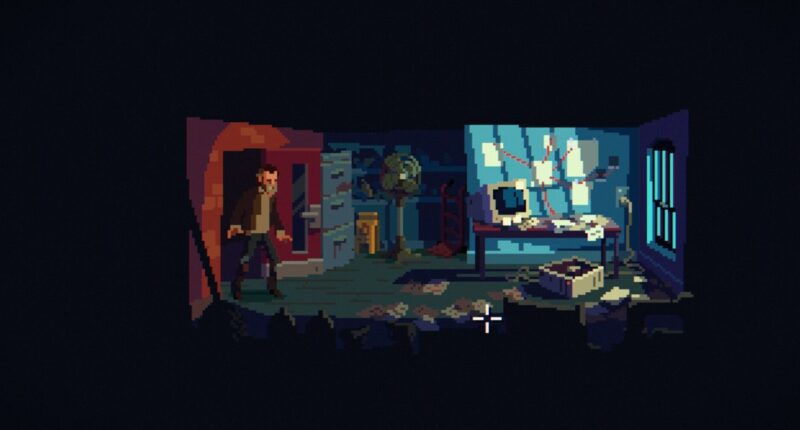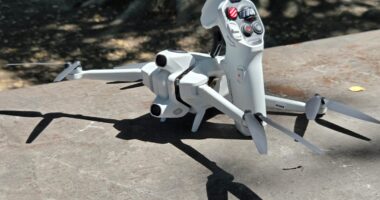Share this @internewscast.com
Point-and-click adventure games are known for their whimsical, amusing narratives. One example that comes to mind is the comedic escapades of the pirate Guybrush Threepwood in the Monkey Island series. This genre naturally blends humor with its gameplay of exploring, interacting with characters, and solving puzzles, turning every person or object interaction into a potential comedic moment. However, The Drifter, a fresh point-and-click adventure from Powerhoof, ingeniously twists this format to deliver a dark, plot-heavy thriller that captures your attention like a riveting novel.
In The Drifter, you step into the shoes of Mick Carter, whom you first meet onboard a train where he’s sneaking in as a stowaway. Almost immediately, you’re thrust into action with a witness to a mysterious and violent murder, setting you off on the run. The storyline quickly evolves into a tangled web of intriguing characters, pursuits, and puzzles to unravel.
Mick narrates the game, often with a grim, first-person perspective voiced by Adrian Vaughan. Although Mick’s narration can sometimes come off as overly intense, Vaughan’s delivery remains engaging, setting a captivating and pulpy tone. The stunning pixel art of the game enhances the experience further, with locations that feature dramatic lighting and atmospheric shadows.
This being a point-and-click adventure, the primary way to move the story forward is by solving puzzles, often by using the right object at the right place at the right time. The game is usually pretty good at suggesting where you need to go through conversations or through a list of broader story threads you’re investigating.
Actually doing the investigating is straightforward. I played The Drifter on Steam Deck, and it has a smart control scheme seemingly inspired by twin-stick shooters that shaves off a lot of the clunkiness of old-school LucasArts adventure games. You move Mick around with the left control stick, but when you move the right control stick, a little circle pops up around him with squares that indicate things nearby that you can interact with. You can select things you want to look at with a press of a trigger button. (You can, of course, use a more traditional mouse to play the game, too.)
More than once, though, I got completely stuck, and I often just brute-forced every item in my inventory with every person I could talk to until I found a way to move forward. I also occasionally leaned on online guides to figure out where to go next or if I missed something while investigating. When I hit walls, I really wished there was some kind of direct in-game hint system to give me a push in the right direction — this is an old-school issue with the genre, but a lot of modern games have figured it out.
Pushing through those more obtuse head-scratchers was worth it, though: in the later parts of my eight-hour run of The Drifter, the narrative threads all started to come together in some truly mind-bending ways. More than once, I stayed up way past my bedtime as I raced to figure out what would happen next.
I’m glad this story for Mick is over, but part of me hopes he runs into trouble again so I can cozy up with another point-and-click thriller.
The Drifter is available now on PC.







